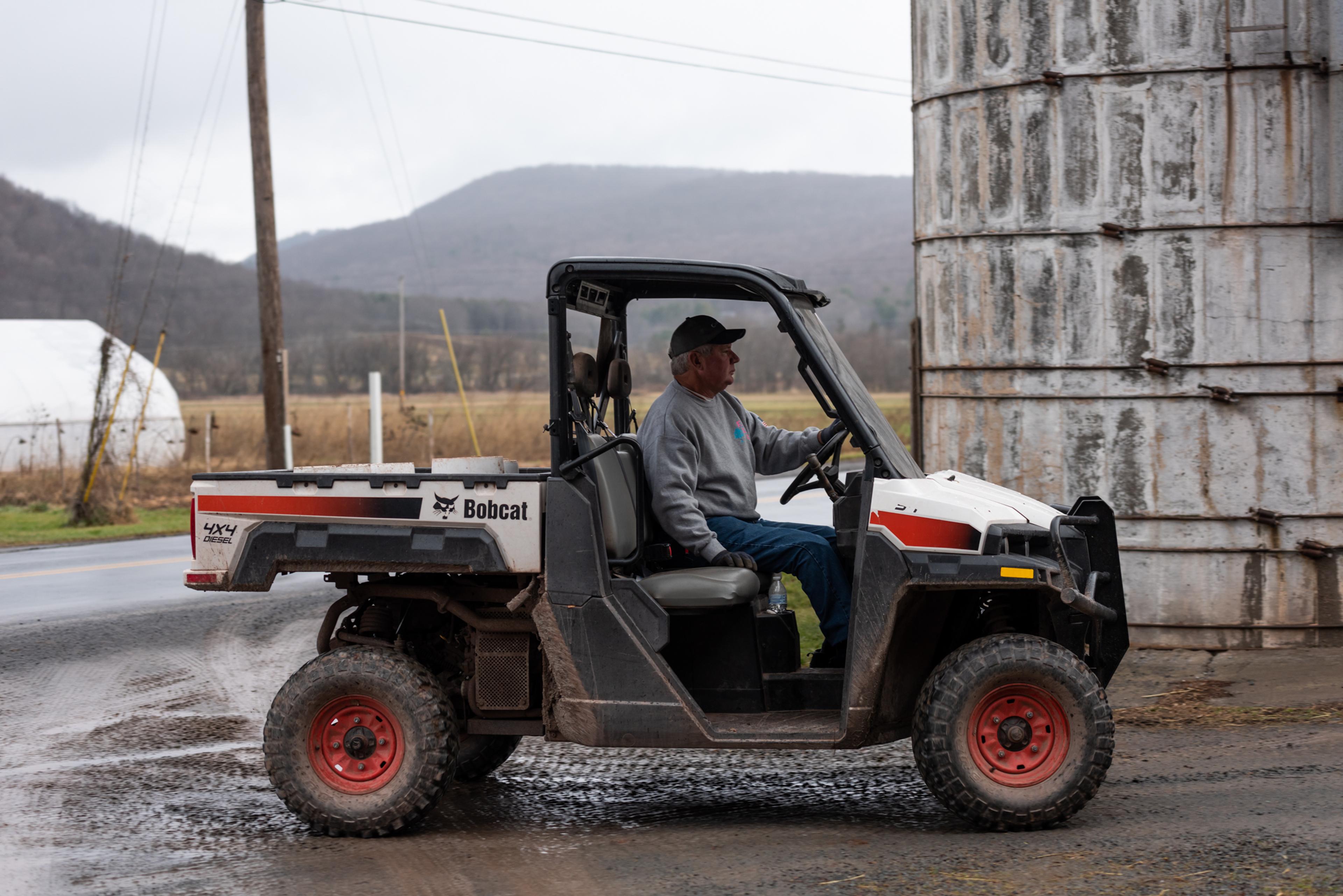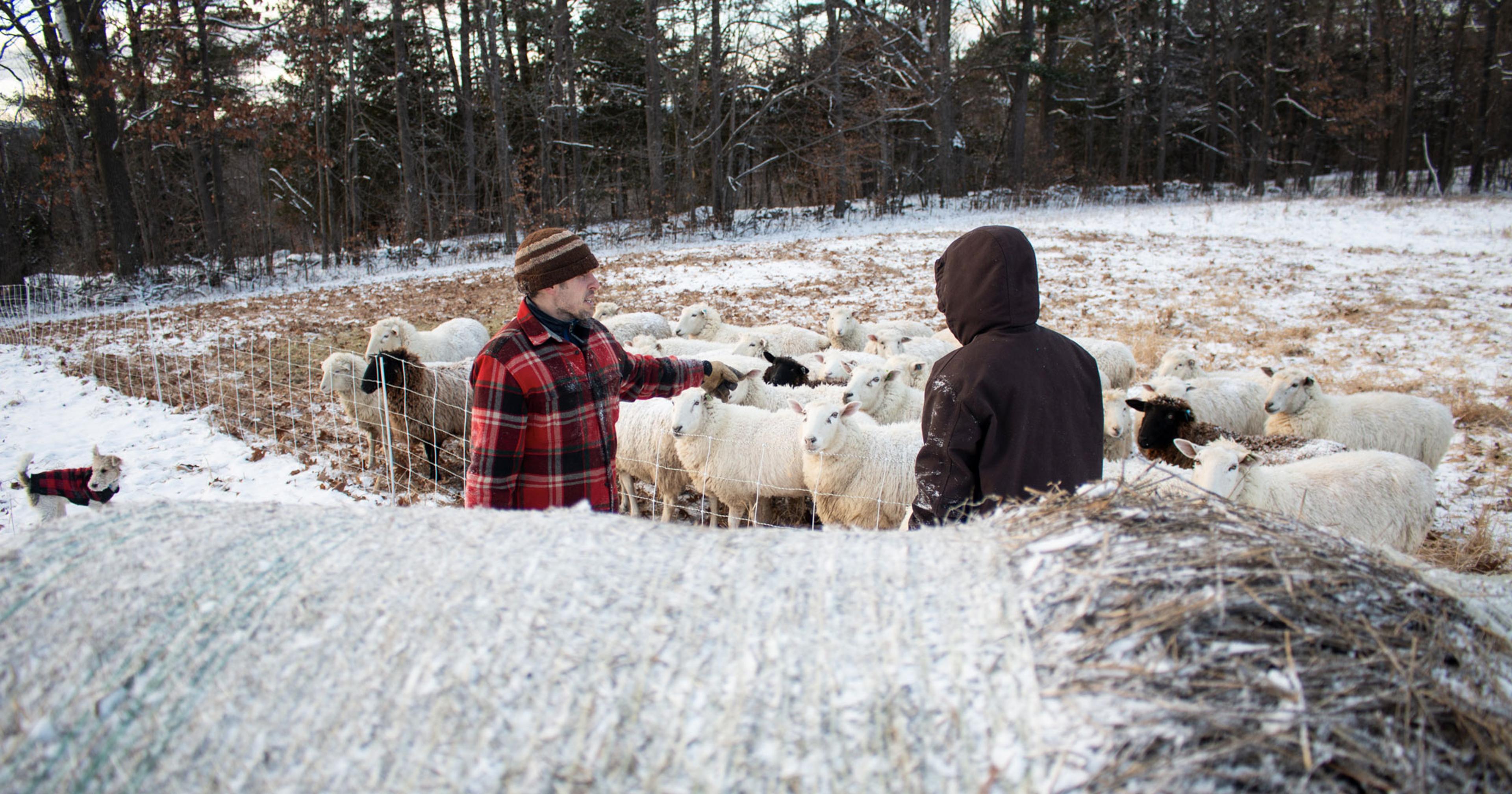Yoga is gaining ground in agriculture, even among traditional farmers who say it’s not for “people like them.”
Every morning when Shelby Watson-Hampton wakes up on her southern Maryland farm and vineyard, with chores to do, animals to feed, and a toddler to take care of, she does something else first: yoga.
“It’s not a regular practice … but every morning I make myself do a series of moves just to wake my body up,” she said. “Some of my moves probably aren’t real yoga moves,” she added with a laugh.
For a farmer as busy as Watson-Hampton, those few minutes at the beginning of each day set a very crucial tone. A burst of yoga sets her up for success in the rest of her work — especially the repetitive physical movements on her farm and vineyard.
“We do almost everything in the vineyard by hand. There’s very few things that can be done by tractor,” she said. “So that’s up and down, up and down, in and out motions, and a lot of it is really repetitive.”
According to the National Institute for Occupational Safety and Health, many farmers and farmworkers are at risk of musculoskeletal pain from repeated actions, which can lead to inflammation, carpal tunnel syndrome, and arthritis. Watson-Hampton, along with her husband and her farmer friends, are already feeling the impact of the years.
“A lot of us grew up on farms and we’ve been doing manual labor or hard work or outdoor work for decades now, and it’s not unheard of to have people in their 30s and 40s who have knee problems and back problems, neck problems,” said Watson-Hampton. “And I’m like, God, we sound old and we’re really not. And farming is hard on the body, I mean physically, and if you’re not taking care of yourself, it’s harder.”
According to leading agricultural health experts and practitioners, yoga is becoming more popular within farming communities because of its benefits for treating and preventing ag work’s unique, intense strains on the body. Peer -reviewed medical studies have proven that “yogic practices enhance muscular strength and body flexibility, promote and improve respiratory and cardiovascular function … reduce stress, anxiety, depression, and chronic pain, improve sleep patterns, and enhance overall well-being and quality of life.”
Similar to professional athletes, farmers can stretch and their musculoskeletal system through yoga and prevent repetitive stress injuries. According to the National Institutes of Health (NIH), research has shown that a regular practice can help relieve chronic pain, improve mental and physical health, and overall well-being.
“Your body is your first tool. Everything you do, even if you buy the most expensive thing, maybe a tractor or a broad fork or whatever it is, if your body is not working properly, nothing is going to work properly,” said Julie Bradley-Low, who lives and works on a family farm in southern Canada raising livestock, growing CSA produce, and tending to an orchard. “To be fit for farming is not just a random or lucky thing. It’s putting time and energy into the proper tools to function well.”
“It’s not unheard of to have farmers in their 30s and 40s who have knee problems and back problems, neck problems.”
Bradley-Low is also a certified yoga teacher who runs classes for other farmers, who often have not only aches and pains but the mental block that yoga isn’t for “people like them.”
“There is nothing inaccessible [about] doing yoga,” said Bradley-Low. “Yoga is only stretching with mindfulness. It’s nothing more than this … you don’t have to be flexible or anything, it’s just that practice of being present in your body while you’re giving it relief.”
Preconceived notions about yoga and who it’s for has been a problem in spreading adoption of the practice through the agricultural world. Experts said that they especially face resistance from older male farmers — the biggest demographic in U.S. farming today. National farming organizations, especially those focused on safety and health, are beginning to get creative as they promote yoga to their members, hoping that the practice can reduce injuries and support a healthier workforce even for the reluctant.
For example, the national nonprofit AgriSafe, which is dedicated to promoting safer agricultural practices, faced some internal questions when starting a promotional push about yoga a few years back.
“Initially even some of the Health and Safety folks [at AgriSafe] kind of looked at me, slant eyes and like, you sure this is going to fly?” said Linda Emanuel, community health director for AgriSafe and farmer on a fifth-generation Nebraska farm. “And yes, there was some pushback, especially from the males. But the females, they were intrigued and they would step forward.”
“I wish we could come up with a better phrase than self-care … but more like taking care of yourself.”
Soon, she said the benefits of yoga practice began to speak for themselves for farmers of all stripes, thanks in part to a series of YouTube yoga videos and handout posters teaching farmers and workers how to do yoga without leaving their land.
“We know that farmers and ranchers are not going to walk away … from their farm and report to a studio or a gym four or five times a week,” said Emanuel, who is featured on the yoga posters. She got into yoga herself later in life, when she was looking for some way to keep her body healthy with the pressures of farm work and her nursing career.
“It was like, let’s figure out an exercise that they can do using their own tools on the farm, like a shovel or a fence post. Or in our YouTube video, there’s one of a male farmer stretching alongside of his pickup, something that they can incorporate easily into their day.”
AgriSafe yoga’s initiative is working, with more and more farmers blending stretching and practice into their daily lives, with another side effect: positive mental health impacts.
“Of course the physical benefits are there, but yoga can be used as a stress outlet that deep breathing and the mental focus of yoga offsets the emotional stress that can happen throughout our day,” Emanuel said.
“Of course the physical benefits are there, but yoga can be used as an outlet that offsets the emotional stress.”
Bradley-Low has also seen the positive mental health impacts among her own students.
“We can really have compassion for each other to understand this is a tough job, not only physically, but mentally and emotionally because we’ve been through many seasons and even the best farmers face things that they can’t control, like the weather or whatever,” she said. “I really see yoga for a farmer as the best way to sustain people’s farming, and not only physically, but with presence, you can access the mental and the emotional. I think it’s as important as the rest because you’re the human in the center of your operation.”
Watson-Hampton, who is also the director of the Southern Maryland Agricultural Development Commission, echoed that point. She pointed to her morning yoga practice as something that grounds her throughout the entire day, something she wishes other agricultural workers could also have.
“Farmer mental health is a massive issue,” she said. “And I wish we could come up with a better phrase than self-care … but more like taking care of yourself.”










